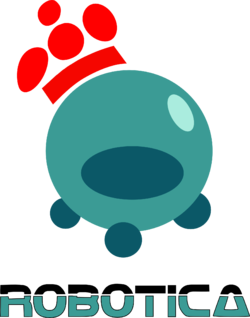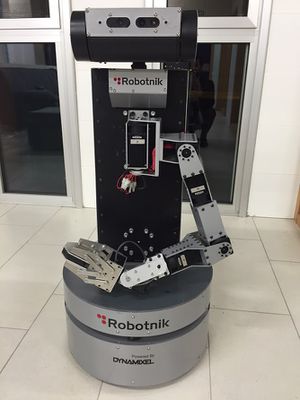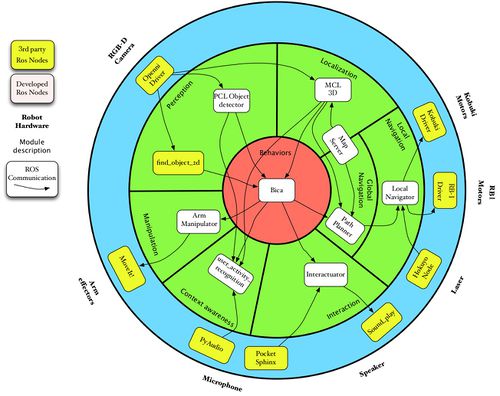RoboCup
Contents
This page is currently being developed
Team
Robotics Groups
People
- Integration (Team Leader): Francisco Javier Rodríguez Lera
- Navigation and Control: Francisco Martín Rico
- Manipulation: Fernando Casado García, Alvaro Moreno García,
- Navigation: Jesús Balsa Comerón, Jonathan Gines Claveo, Francisco Javier Gutierrez-Maturana
- Perception: Diego García Ordás, Alvaro Moreno García, Francisco Javier Gutierrez-Maturana
- Team Director: Vicente Matellán Olivera
Robot
OrBiOne
OrBiOne is the robot that we will be using for 2016 competitons. This mobile manipulation (RB-1) is developed by Robotnik.
Hardware Description
– Robot name: RB1
- . Base: Robotnik (Dinamixel Motors)
- . Vision Sensors: RGB-D Xtion
- . Range sensors: Frontal laser
- . Dialogue Sensors: Directional microphone Rode Rycote , Loudspeakers
- . Manipulation: 7DOF arm. Dynamixel Pro servos. Workspace: 70 cm
- . Computer Description: Intel Core i7 with 8 GB of RAM and a 200 GB of disk
- . Torso: +40
- . Head: pan-tilt head.
Software Description
– Development framework: ROS
- . Vision: ork, findobject
- . Dialogue: Pocketsphinx
- . BellRecognition: pyaudio
- . Manipulation: MoveIt, self developements.
- . Navigation: Ros stack, self developements.
– Robot Control: Finite State Machine (FSM) using Bica
Videos
The video presents a surveillance task in our lab. It shows the navigation approach of OrbiOne robot (RB1-robotnik robot) in our apartment.
The robot navigates different apartment rooms in order to check user availability (living room and bedroom), visits (apartment front door after the doorbell rings) or alarm situation (fridge open-door alarm).
Quiz Game and Context Awareness
Trivia game between user and robot. The conversation is interrupted by a ringbell.
Research
Arhictecture
We have a three layer architecture based on ROS and BICA [1]. The lower layer corresponds to ROS, and is in charge of hardware management. The intermediate layer provides the robot skills in order to carry out specific duties (perception, navigation,...). The top layer presents BICA. It is a component-based for generating behaviors architecture. This node coordinates the various capabilities of the robot depending on the task to be carried out by the robot. Figure 2 shows the overall architecture of the software we have developed for participating in the RoCKIn competition.
Github Repository
- Individuals:
- Group
https://github.com/Robotica-ule/MYRABot
Papers
- List of group publications can be found in the University of León's robotics group publications page and in the URJC's publications page.



